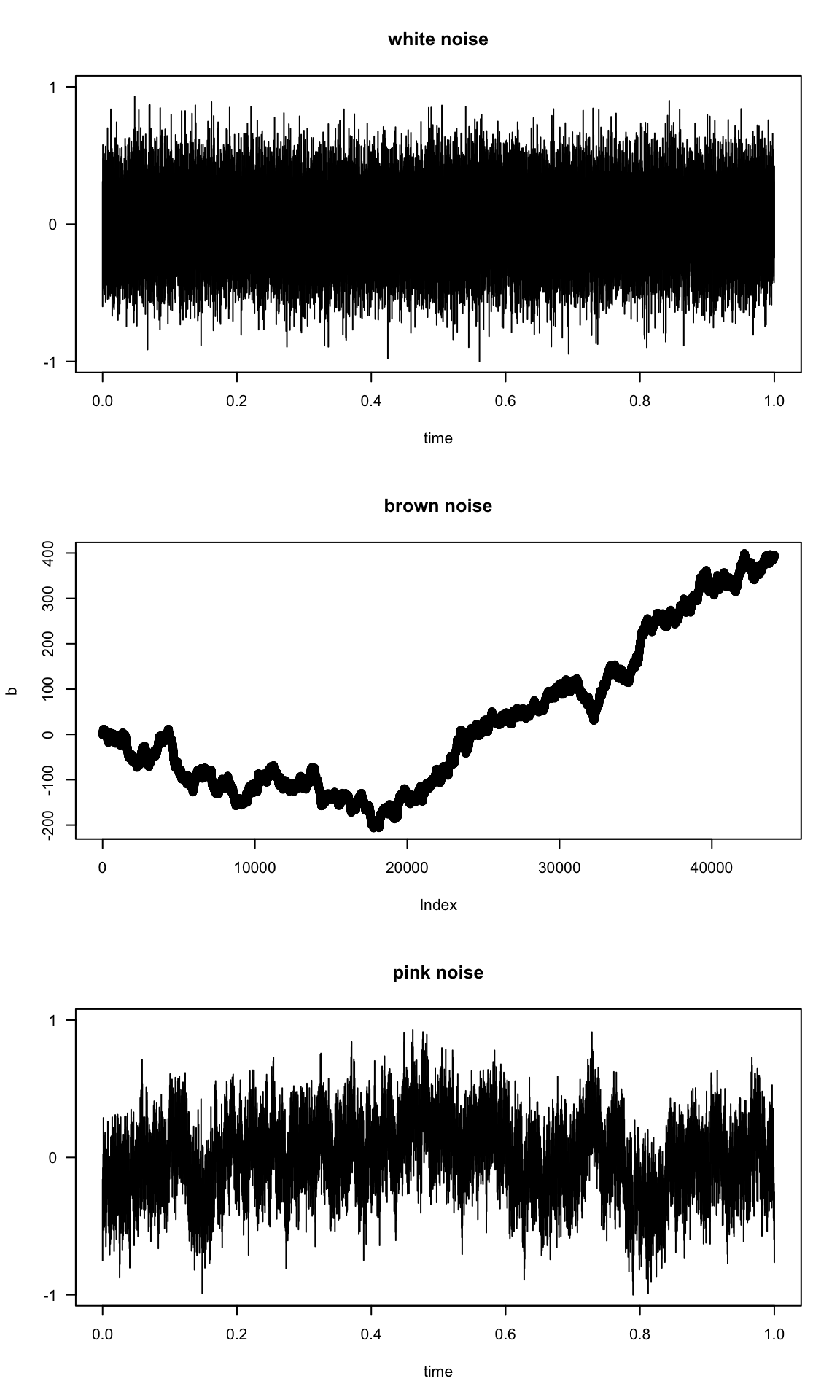Simulating noise types (following this)
library(tuneR)
# White noise
w <- tuneR::noise(kind = c("white"))
# Brown noise is integrated white noise
# (ie. random walk)
# Use same time series length as in the other series
b <- cumsum(rnorm(length(w@left)))
# Pink noise
p <- tuneR::noise(kind = c("pink"))
# Visualize
par(mfrow=c(3,1))
plot(w,main="white noise")
plot(b,main="brown noise")
plot(p,main="pink noise")
Estimating Hurst exponent for the noises
## Simple R/S Hurst estimation: 0.5290583
## Corrected R over S Hurst exponent: 0.5276734
## Empirical Hurst exponent: 0.5081172
## Corrected empirical Hurst exponent: 0.4923274
## Theoretical Hurst exponent: 0.5155387Hbrown <- hurstexp(b, d = 128)## Simple R/S Hurst estimation: 0.9178366
## Corrected R over S Hurst exponent: 1.012251
## Empirical Hurst exponent: 1.016203
## Corrected empirical Hurst exponent: 1.012132
## Theoretical Hurst exponent: 0.5155387Hpink <- hurstexp(p@left, d = 128)## Simple R/S Hurst estimation: 0.8416097
## Corrected R over S Hurst exponent: 0.9304329
## Empirical Hurst exponent: 0.9398541
## Corrected empirical Hurst exponent: 0.9336077
## Theoretical Hurst exponent: 0.5155387